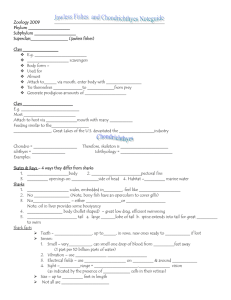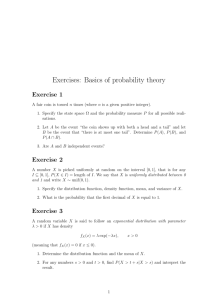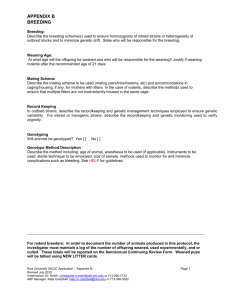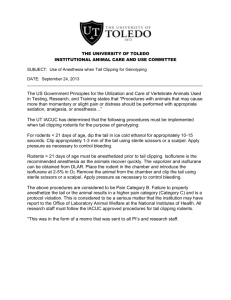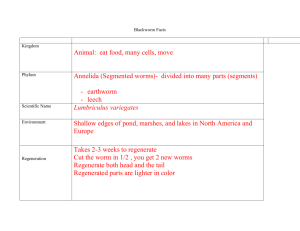SOP054 Title: Tail Snipping of Rodents Revision No: Replaces:
advertisement
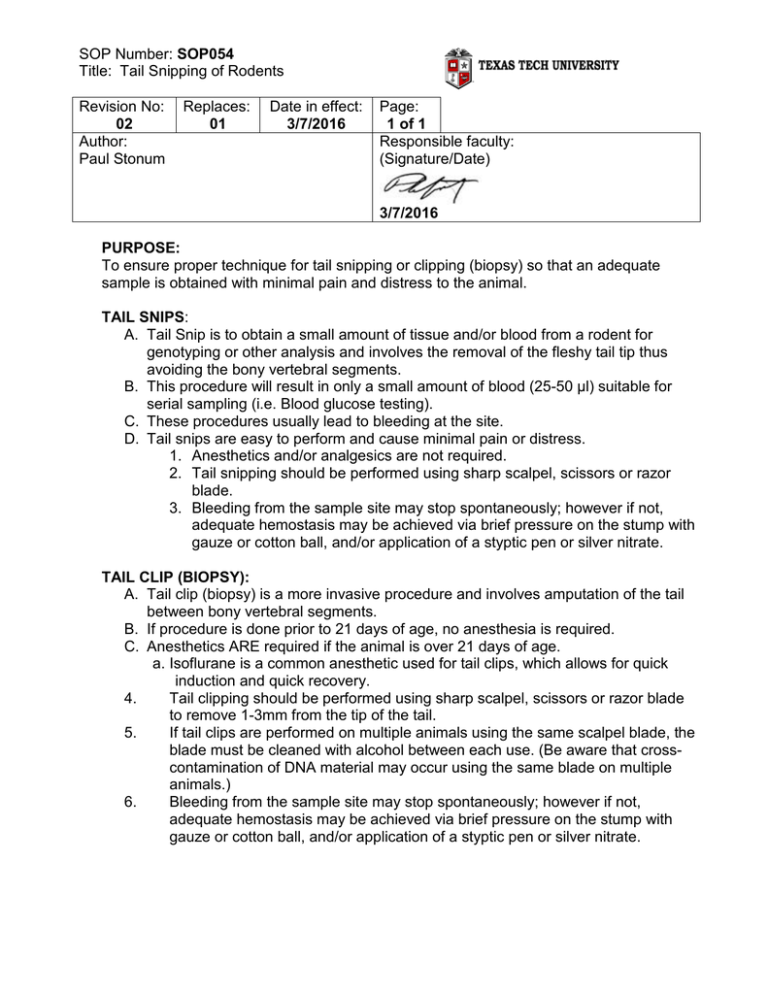
SOP Number: SOP054 Title: Tail Snipping of Rodents Revision No: 02 Author: Paul Stonum Replaces: 01 Date in effect: 3/7/2016 Page: 1 of 1 Responsible faculty: (Signature/Date) 3/7/2016 PURPOSE: To ensure proper technique for tail snipping or clipping (biopsy) so that an adequate sample is obtained with minimal pain and distress to the animal. TAIL SNIPS: A. Tail Snip is to obtain a small amount of tissue and/or blood from a rodent for genotyping or other analysis and involves the removal of the fleshy tail tip thus avoiding the bony vertebral segments. B. This procedure will result in only a small amount of blood (25-50 µl) suitable for serial sampling (i.e. Blood glucose testing). C. These procedures usually lead to bleeding at the site. D. Tail snips are easy to perform and cause minimal pain or distress. 1. Anesthetics and/or analgesics are not required. 2. Tail snipping should be performed using sharp scalpel, scissors or razor blade. 3. Bleeding from the sample site may stop spontaneously; however if not, adequate hemostasis may be achieved via brief pressure on the stump with gauze or cotton ball, and/or application of a styptic pen or silver nitrate. TAIL CLIP (BIOPSY): A. Tail clip (biopsy) is a more invasive procedure and involves amputation of the tail between bony vertebral segments. B. If procedure is done prior to 21 days of age, no anesthesia is required. C. Anesthetics ARE required if the animal is over 21 days of age. a. Isoflurane is a common anesthetic used for tail clips, which allows for quick induction and quick recovery. 4. Tail clipping should be performed using sharp scalpel, scissors or razor blade to remove 1-3mm from the tip of the tail. 5. If tail clips are performed on multiple animals using the same scalpel blade, the blade must be cleaned with alcohol between each use. (Be aware that crosscontamination of DNA material may occur using the same blade on multiple animals.) 6. Bleeding from the sample site may stop spontaneously; however if not, adequate hemostasis may be achieved via brief pressure on the stump with gauze or cotton ball, and/or application of a styptic pen or silver nitrate.
